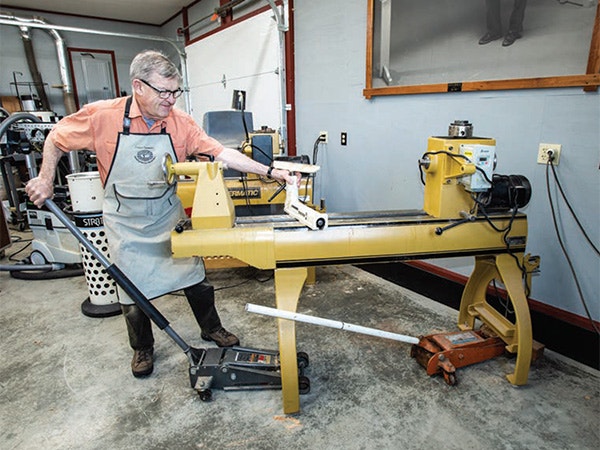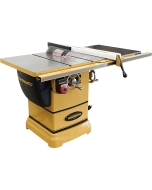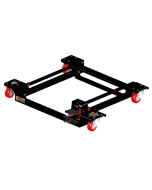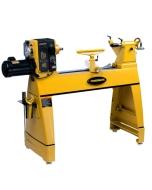Toggle Nav
Advice for Moving a Full-size Lathe
Categories:
Workshop Setup & Tool Maintenance
September 11, 2020
How the heck do you move a full-size lathe into a workshop in the first place, especially if it's in a basement?
Well, if you think getting a big lathe down into a basement is daunting, moving a used one out of it is even more challenging! But, take heart: it's very do-able.
Inevitably, moving a lathe up or down a flight of stairs is substantially easier if it's disassembled into its major components. Such was my approach when I needed to move my friend's Oneway 2436 lathe after I bought it. At 850 lbs., I knew that it was not coming up the stairs assembled, so I descended on the machine with with a full complement of sockets, hex drivers and end wrenches, for a complete disassembly. Tailstock, banjo and the outboard bed extension legs and controller were easily removed. One by one, I could carry all of these up the stairs to my pickup truck waiting outside.
The angle of the guide can be changed in relation to the workpiece, and most also feature a depth stop.
The difficult item was the cast-iron bed, which weighs 325 lbs. To move this, I rented a stair climbing lift truck (dolly), called a Lectro Truck. An electric motor runs a lead screw that allows this specialized piece of equipment to climb stairs and lift loads up to 1,500 lbs. To climb stairs, you elevate the truck until the back half rests on the second step up. Now the front half is brought to the first step, and the process repeats progressively that way. Easy as can be, with the lathe bed strapped to the lift truck, I was able to safely move the lathe bed up the stairs.

There are various strategies for moving lathes (and other heavy woodworking machinery) that are in a shop on the ground floor (such as a garage shop). One of them is to find a car towing company with a tilt-bed tow truck. They can back up to the shop door and winch the lathe onto the flat bed, strap it down and drive it to your shop where you can reverse the process. Many landscape excavators have tilt-bed trailers that are low to the ground, and some can fit through a garage door.
A final way to move machines in and out of shops and on or off of a truck is to use a tractor with a front-end loader or a forklift attachment. Be sure the lifting capacity is greater that the weight of your lathe, to prevent the tractor from tipping forward!
Hydraulic jacks, especially floor jacks for lifting cars, are very useful in lathe-moving situations, too. I have two that I use for moving my four full-size lathes around the shop to prepare for the classes I teach. They also can facilitate moving a lathe to shop door, if needed.
Whichever method you choose, use common-sense tactics when moving a heavy, full-sized lathe. Lift with your legs and not your back. Enlist the help of others if you feel unsure about lifting or carrying a heavy component. Tip and slide when you can, to prevent bearing the full brunt of a heavy component. Remember that wheels can be your friend — an economical hand truck or carts with casters can make loads so much easier to manage! Above all, keep your wits about you. Patience and planning ahead usually win the day.
Keep the inspiration coming!
Subscribe to our newsletter for more woodworking tips and tricks




